Self-production of décor items is a creative and interesting process. It is not at all difficult to make wall lamps with your own hands, which can beautifully complement the interior of the room, giving it, in addition to additional lighting, comfort and home warmth. The convenience of making such crafts lies in the fact that it does not require large material costs for the purchase of material. So, for example, you can make a wall sconce with your own hands even from improvised means that can be found in every home. In our article, we will look at examples of self-design of wall lighting fixtures with examples of photos of finished samples.
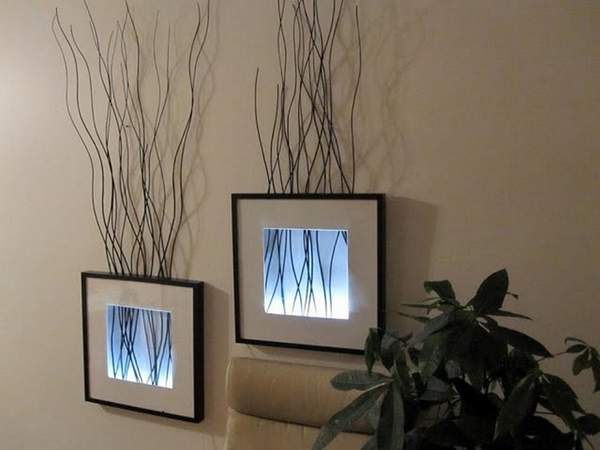

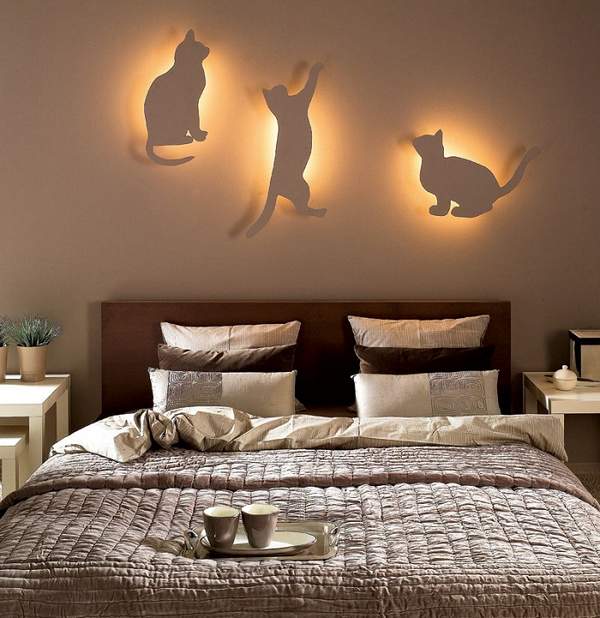
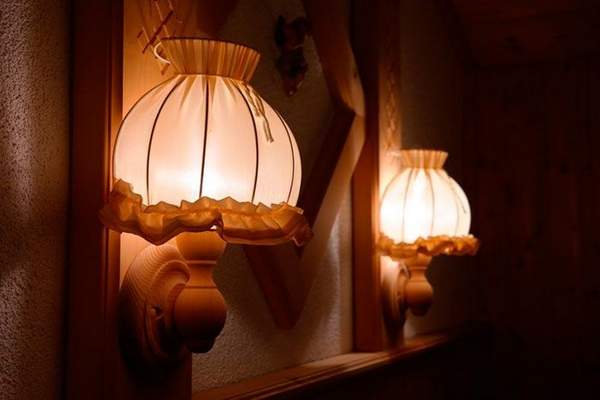
Do-it-yourself wall lamps: what is required for
manufacturing
In order to make a sconce with your own hands, you need tools, a base, an electrical wiring system with a base and a light bulb and materials for the lampshade.
As for the tools, we will not list a huge number of everything that may be needed in one case or another, but we will only talk about the main ones that will be useful in one way or another, namely:
stationery (pencil, rulers, eraser, possibly compasses);
- roulette;
- jigsaw or small file;
- a drill with drills in order to install a wall sconce with your own hands;
- a heating gun with glue (it glues a variety of materials much more firmly than any other);
- scissors;
- paint or colored spray can.
Do-it-yourself lamp on the wall: making a frame
The basis for the lamp will be a round or square board, sawn from a sheet of MDF. It should have the size of a future sconce with your own hands (photos are presented in the article). At the base, it is also necessary to make slots for installing cartridges with light bulbs. Their number will depend on how bright the lighting should be. When making slots, be sure to take into account the thickness of the bulbs in order to correctly calculate the distance between them.
It is also necessary to cut the sidewalls for the perimeter of the base, and make a small gap in the lower one in order to pass the electrical wire. The sidewalls are fastened with screws, the places of the caps are covered with putty. It is advisable to use sandpaper for uniform grouting.
Do-it-yourself wall lamps can provide color design. The entire frame can be initially covered with a primer, which will ensure a long service life and paint in the desired color.
Fasteners or hooks are installed on the back of the side parts, with the help of which the luminaire will be mounted to the wall.
We equip the lamp on the wall with our own hands with electrical wiring
For electricity supply equipment, you will need a power cord with a plug and a switch (you may have to buy it or use the remaining one after a non-working lamp). The chuck can also be removed from obsolete lighting fixtures.
Do-it-yourself wall lamps, or rather, their lampshades, are often made of combustible materials such as fabrics, paper, threads, etc. In order to avoid fire, it is worth using energy-saving fluorescent light bulbs, which have a high light output at low heating.
Light bulbs with cartridges are attached to the finished frame, the wire is discharged through the equipped hole. On this, we can assume that the lamp on the wall with your own hands is half ready. Now it’s worth making a lampshade.
Do-it-yourself lampshade for sconces from scrap materials
There are many ways using materials such as wood (various twigs), fabrics, threads, etc. It is imperative to have a wire that can hold its shape well for a long time, but, at the same time, bend well.
Do-it-yourself wooden wall lamp
After pruning large trees, various branches and snags remain, which can be successfully used by decorating wall lamps with your own hands. Photos show how ordinary, at first glance, driftwood turned into an elegant sconce. To do this, it was only necessary to cut and grind the sharps, and make a hole inside for the electrical wire.
Another way to make a spectacular sconce from wood with your own hands is to decorate it with the help of sprigs of the vine, arranging them in different sequences. Such a lamp will become a real decoration of a room in eco style.
Beautiful do-it-yourself wall lamps (photos are presented below) can be made from vines. They can be made in different ways of weaving, but for beginners it is worth stopping first on simple designs.
Do-it-yourself sconces with a lampshade made of threads
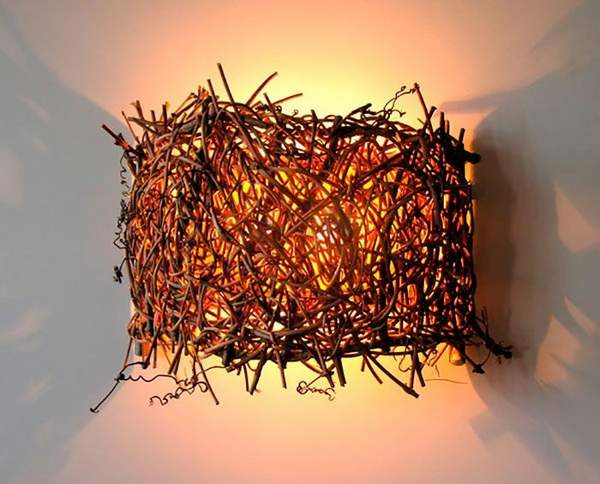
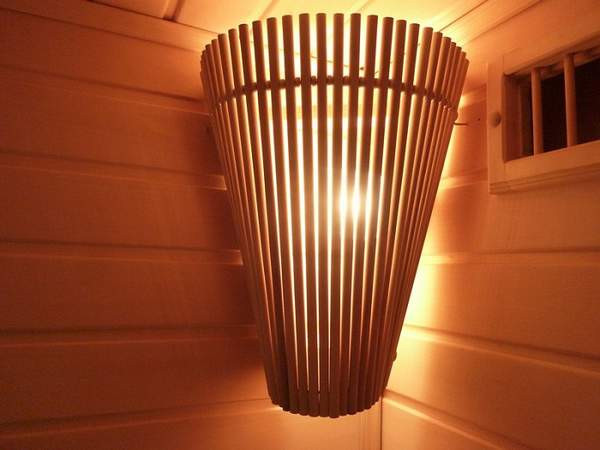
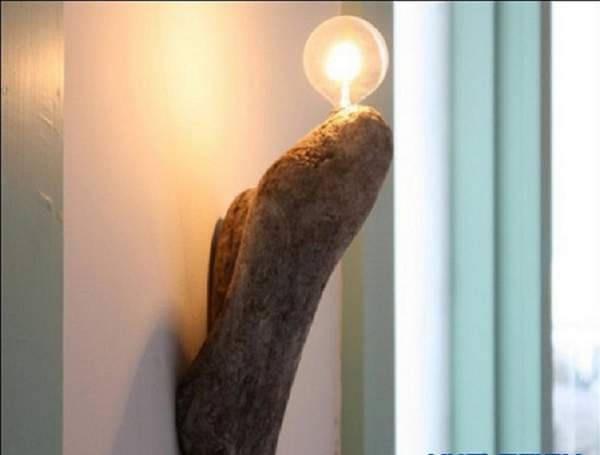
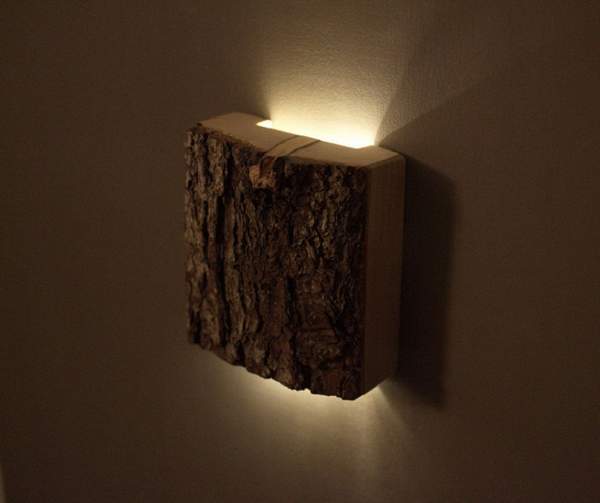
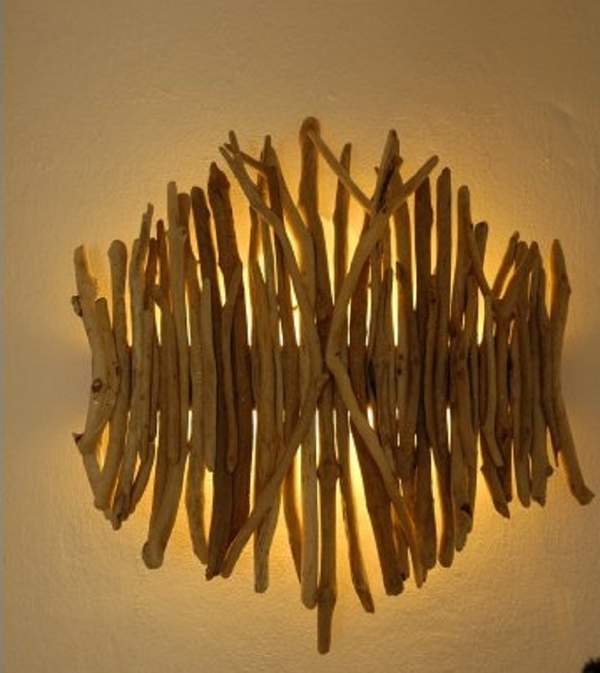
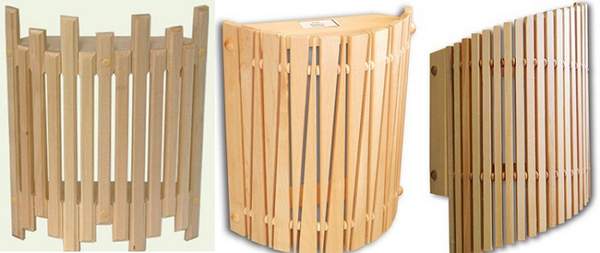

Such a lamp on the wall with your own hands is quite easy to make. To do this, you need to have a dense thread of any color (you can take white, and paint the finished structure in the desired color), PVA glue and a balloon. The technology is very simple. First of all, we inflate the ball to the size that the lampshade should have and tie it tightly. We soak the threads in glue beforehand, and then, attaching the tip to the base, we begin to wrap them around the ball in a chaotic manner. The winding density can be anything, it all depends on how bright the lighting should emit a wall sconce with your own hands.
After finishing the winding, you can once again brush the entire workpiece with glue and hang it to dry. Remove the ball from the completely dried workpiece – for this it must first burst. The lampshade is ready. If necessary, it can be painted in any color using spray paint. It is noteworthy that such a sconce with your own hands (photos are presented in the article) can emphasize any style of interior, depending on the color of the lampshade: white is suitable for minimalism, black will favorably emphasize high-tech, bright yellow or red will complement modernity, etc

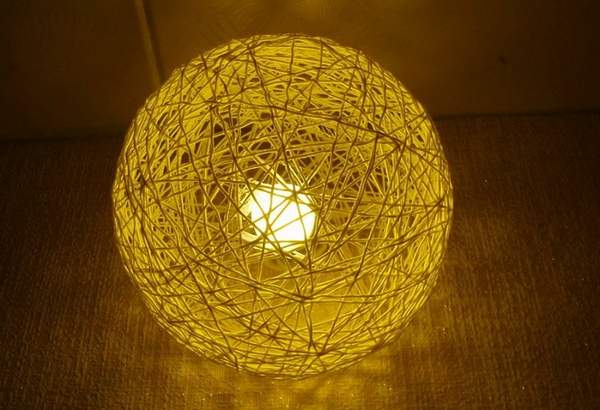
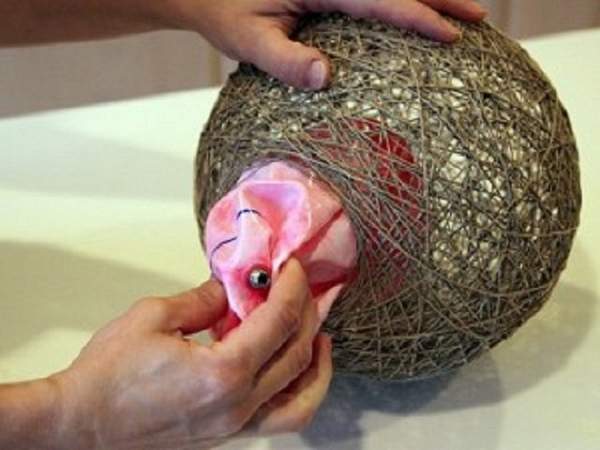
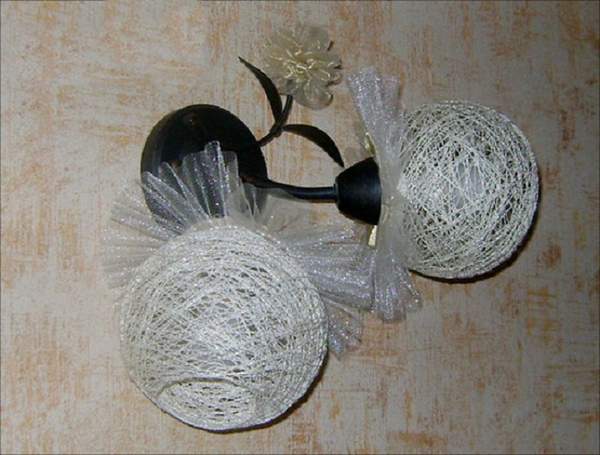
Do-it-yourself wall lamps made of tape
In order to make such a lampshade, first of all, it is necessary to make a frame of strong wire with a large lower and smaller upper ring. Having fixed one end of the tape on it, we begin to wrap it around the entire frame in a circle. At the same time, the fabric is wound tightly, so that there are no gaps. The finished lamp on the wall with your own hands can be decorated with various small elements: make a pattern of buttons, attach paper butterflies, etc.
If desired, the lampshade can also be sheathed with fabric. It is better to use an opaque material such as cotton, taffeta, dark silk, etc., so that the wire frame is not visible.



